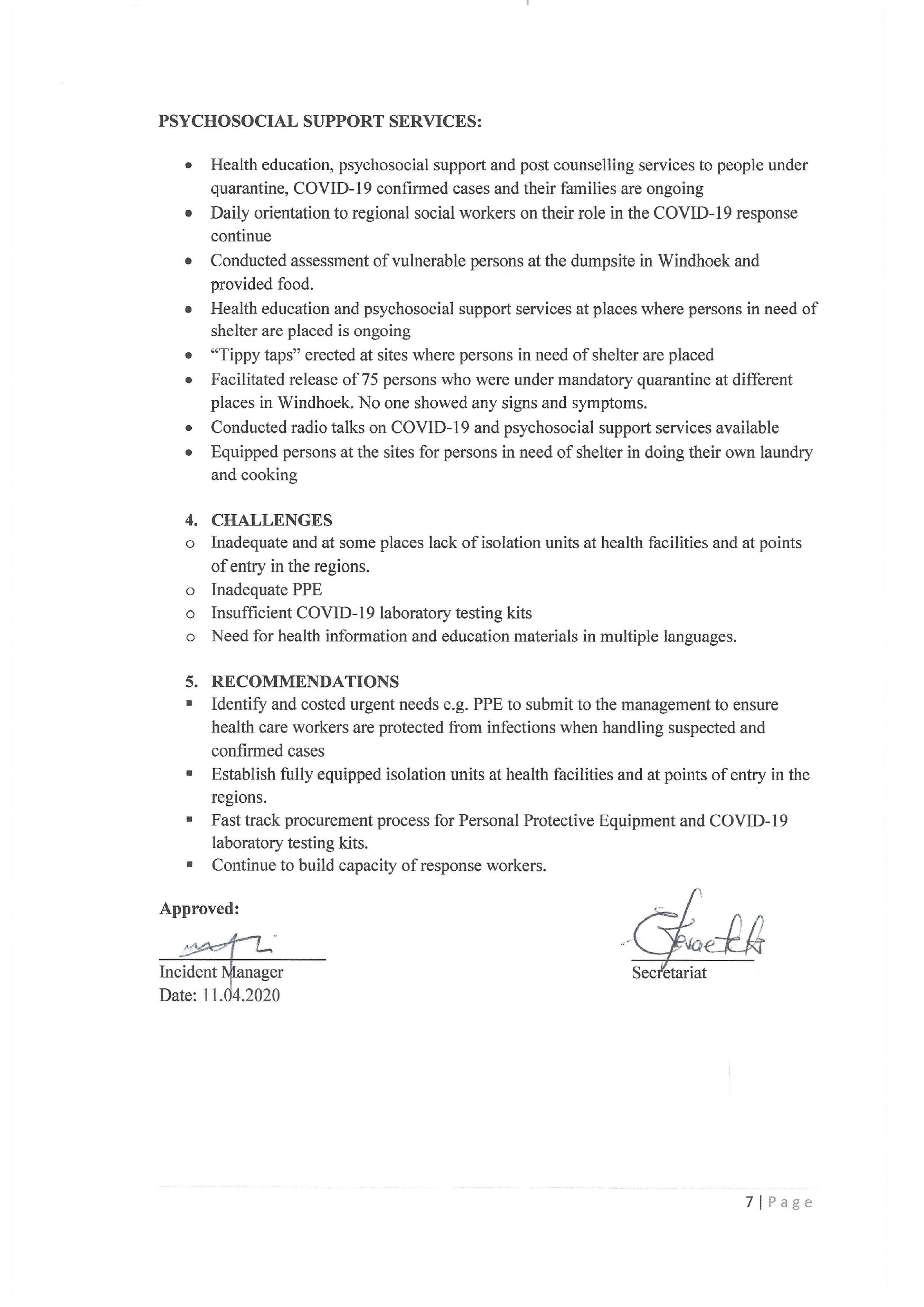
Confirmed case: A person with laboratory confirmation of COVID-19 infection,
irrespective of clinical signs and symptoms.
e Surveillance activities
Daily pillar and intra-pillar discussions are held to deliberate daily progress,
gaps and way forward;
Call centre continue operations for 24 hours per day.
Data entry is ongoing and data dashboards are under development using
existing platforms.
Active case finding is currently underway in Khomas, Erongo and Kharas
regions, aimed to look for possible community transmission.
o All 29 specimens tested to-date are negative (see table 2).
Training of 10 administration officers from the MoHSS occurred on 9 April
2020, and they have been placed on the call-centre already.
Contact tracing is ongoing (see table 3)
People under mandatory quarantine are being monitored daily (see table 4)
Table2: Number of suspected cases of COVID-19 from active case search, 11.04.2020
Laboratory results
Region
Number of suspected cases
Positive
Negative
Khomas
22,
0
22
Erongo
5
0
3
//Karas
2
0
2
Total
29
0
29
Contact tracing Summary
Table 3: National contacts tracing summary as of 11 .04.2020
Variables
Contact risk level
High
Medium | Low | Total
@Total Number of contacts listed (potential)
67
46
Total Number of contacts identified
66
46
Total Number of active contacts (being
followed)
ae
5
Number of contacts monitored/followed in the
last 24hrs
=
TAoltlaolw nuapmber of Contacts completed 14-days
4l
35
116
229
100 212
-
3
nt
86
162
Total Number of contacts that developed signs
& symptoms
_
:
¢
ae
Total Number of contacts tested positive
3
1
0
4
*Total Number of contacts tested without signs 10
1
4
15
and symptoms
© Total Number of contacts lost to follow up
0
2
>
7
# Total number of Contacts never reached
1
0
16
17
@ Number amended due to data cleaning; eight contacts for both case 3 and case 8 were listed twice
*Number of contacts without signs & symptoms tested. One tested positive.
© Seven contacts are lost to follow up, all are non-Namibians and have travelled back to their countries.
# Seventeen contacts could not be reached as they did not provide contact numbers.














